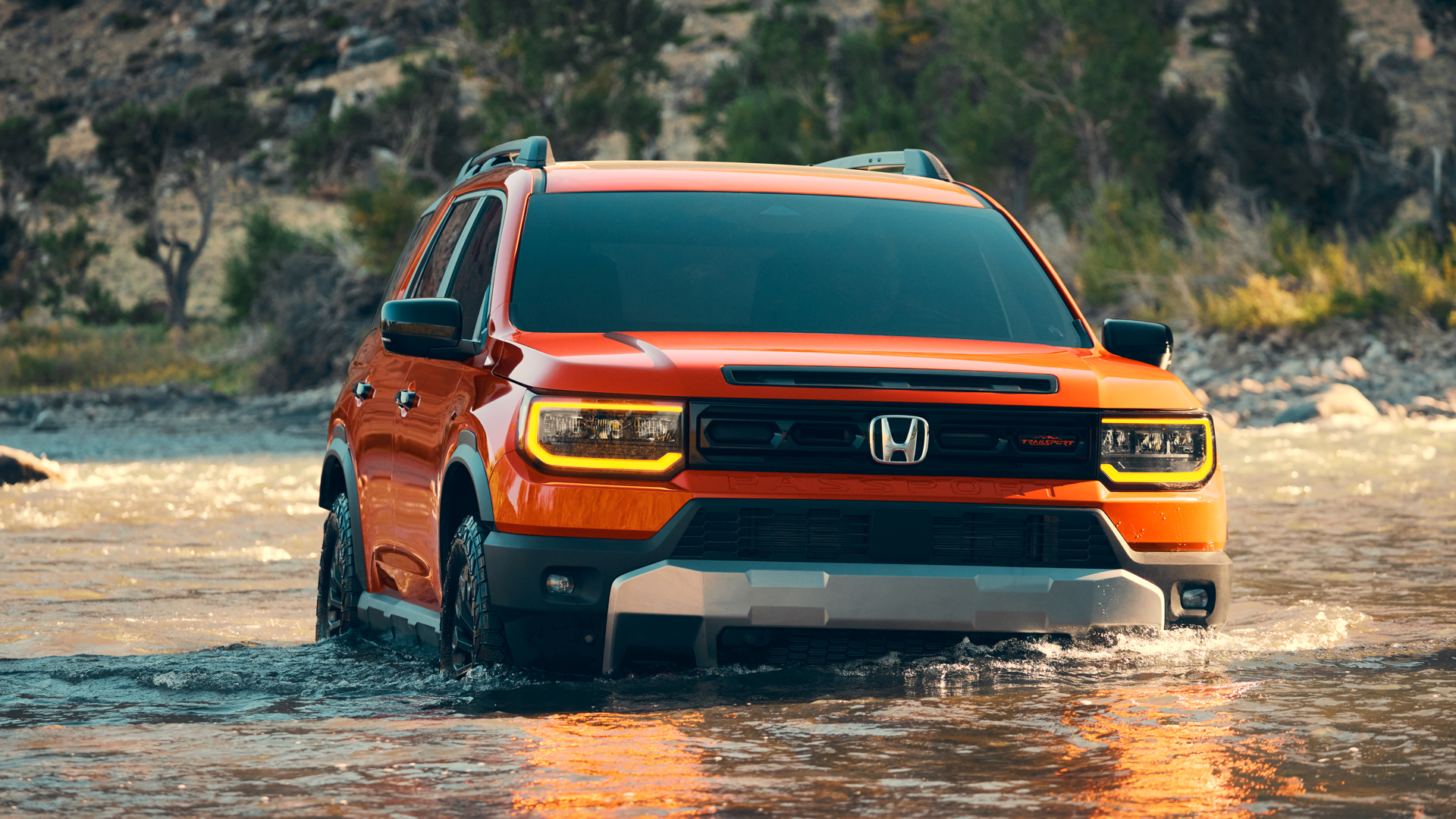
Most car design trends come and go, but there’s no end in sight for split headlights. We broke this down a while back, and the drastically over-simplified explanation is this: People like ’em. Specifically, they like them on new cars that are taller than ever with more space to fill up front than ever, which is why designers adopted the look in the first place. Not every vehicle needs them, though, and I’m here to argue that case with the handsome 2026 Honda Passport as proof.
Before I wax on for way too long about the Passport’s look, some context. You know the split headlight fad I’m talking about, right? Where automakers put a small daytime running lamp above a larger element that actually provides most of the actual forward visibility? It’s not just a thing on American, European, or Asian cars. It’s all of ’em.
There are plenty of examples, and this image from that earlier story I referenced incorporates several into one illustration. It shows the previous-gen Hyundai Kona, Chevy Blazer, Jeep Cherokee (RIP), and the new BMW 7 Series—all with split headlights.
What started as visual trickery has evolved into modernity by association. You know these are newer cars just by looking at them, but not for the reason your brain tells you. We associate the motif with modern cars because it really wasn’t around on old ones, at least at such a scale. But the motif only exists because designers needed to fill the heightened canvases that new cars inadvertently create.
Just look at the current-gen, pre-facelift Cadillac Escalade. If any new SUV is big, it’s this one. And since the designers situated the narrow headlights high and tight, just underneath the hoodline, it looks like it’s squinting. Not even the vertical lighting elements defining the jawline can fix that.
This is what’s plaguing automotive design teams.
My buddy Peter Holderith once did some quick-and-dirty Photoshop work to show what today’s cars would look like without the split headlights. Mind you, these simply take the existing designs and remove the upper LED elements. The results are just unsettling.
The 2026 Passport is clearly different, but how? A lot of it has to do with the distinct front bumper. It’s intentionally a separate visual element, one that communicates a rugged vibe like older body-on-frame vehicles while simultaneously minimizing all the color-matched sameness on the front fascia. That creates a natural break and gives designers a more defined space to work in.
Because the grille is narrow and fits inside the spacial boundaries provided by the headlights top and bottom, it looks clean and compact. As is so often the case with styling, less is more. But that flies in the face of most new car designs.
Honda also used the new Passport’s orange DRLs to its advantage here by only illuminating the perimeter of the headlights, rather than making the small vertical line to connect them inside. This gives the appearance of a unified headlight and grille assembly, drawing your eyes to the package as a single piece rather than three (headlight + grille + headlight).
It would have been easy for Honda to give the Passport a split headlight design because off-road (and off-road adjacent) SUVs are naturally taller. But its approach shows you can still make a large vehicle appear cohesive using old-school methods.
Car designers in the 20th century didn’t have to worry about this as much because the spaces they worked with weren’t so large, nor were they so one-dimensional or color-matched. The big chrome bumpers really did them some favors, and while I don’t see those coming back in my lifetime, automakers have every opportunity to appeal to today’s adventure-vibe-crazed buyers like Honda did here. C’mon, guys—don’t be afraid to call a spade a spade by treating bumpers like bumpers again.
Props to Honda for working all this into one sharp look.
Got a tip or question for the author? Contact them directly: caleb@thedrive.com


